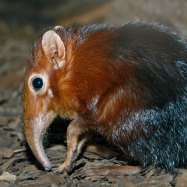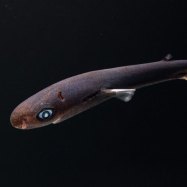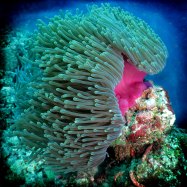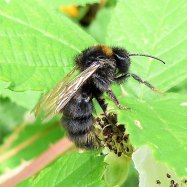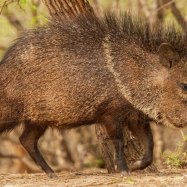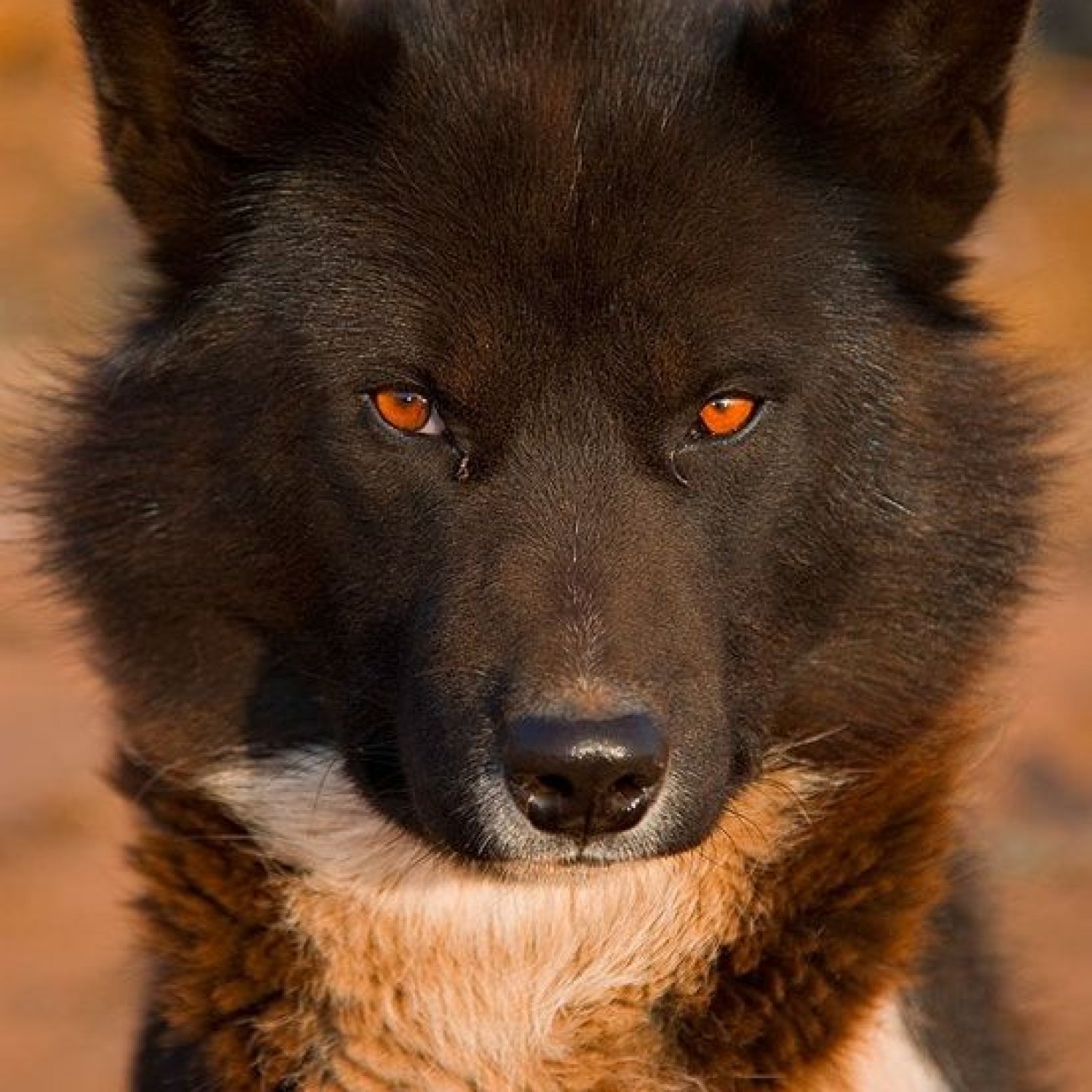
Greenland Dog
55-70 cm (21.5-27.5 in)
The Greenland Dog is a fascinating breed known for their endurance and strength, making them well-suited for the harsh climate of the Arctic regions. With a sturdy, medium-sized body, these dogs can measure anywhere between 55-70 cm and belong to the Canidae family. They are commonly found in Greenland, hence their name, and make great companions for outdoor adventures. #GreenlandDog #ArcticAnimals #Canidae
Animal Details Summary:
Common Name: Greenland Dog
Kingdom: Animalia
Habitat: Arctic and Subarctic regions
The Loyal and Resilient Greenland Dog: A Complete Guide For Potential Owners
Looking for a new furry companion to join your family? Are you interested in owning a dog breed that is not only loyal and courageous, but also has an intriguing history and unique traits? Look no further, as the Greenland Dog might just be the perfect dog breed for you!The Greenland Dog, also known as the Canis lupus familiaris, is a canine breed that has been a trusted companion for humans for centuries. As the name suggests, this remarkable breed originated from Greenland, where it has been used for sledding, hunting, and even as a watchdog.
With its dense and thick fur, sturdily built body, and strong paws, the Greenland Dog is adapted to survive in the harsh conditions of the Arctic and Subarctic regions. And although its primary purpose has been for work, this breed makes an excellent and loving pet with the right owner Greenland Dog.
In this complete guide, we will take a closer look at the outstanding features and characteristics of the Greenland Dog and discover the numerous benefits of owning one.
The History of the Greenland Dog
The Greenland Dog has been around for centuries, and its origins can be traced back to the Eskimo dog breed. These dogs were brought to Greenland by the Thule people approximately 1000 years ago. They used the dogs for transportation and hunting in the Arctic regions.Over time, the breed evolved and adapted to the extreme conditions of these regions, becoming an essential part of the Inuit culture. These sled dogs were also used by European explorers in their expeditions, leading to the widespread recognition of the breed.
In the 17th and 18th centuries, the Greenland Dog was almost exclusively owned by the Inuits, and the breed's population flourished. However, with the introduction of snowmobiles and other modern modes of transportation, the need for sled dogs decreased, and the Greenland Dog population dwindled.
Today, the Greenland Dog is still recognized as an official breed and is considered an important part of Greenland's cultural heritage Goliath Tigerfish. However, its numbers are still relatively small, with only a few hundred registered dogs globally.
Physical Characteristics
The Greenland Dog is a medium-sized breed with a sturdy and muscular build. They have a thick and dense double coat, with a softer undercoat and a longer and coarser outer coat, providing insulation and protection from the cold.Their coat can come in a variety of colors, including white, black, brown, and gray, often with different markings and patterns. This variation in color is the result of a selection process by the Inuit people, who preferred specific colors for specific tasks, such as spotting the dogs on the white snowy terrain.
On average, a fully grown Greenland Dog stands at a height of 55-70 cm (21.5-27.5 in) and weighs between 25-35 kg (55-77 lbs). They have a wolf-like appearance, with a broad chest, strong legs, and a long bushy tail.
Temperament and Personality
Living in the harsh conditions of the Arctic regions has shaped the Greenland Dog's temperament, making them resilient and adaptable to various situations. They are intelligent, independent, and curious, always eager to explore and learn new things.Being a working breed, they have a strong work ethic and are always ready for a task. This makes them an excellent fit for experienced dog owners who can provide them with ample physical and mental stimulation. If not given enough exercise and mental stimulation, Greenland Dogs can become destructive and exhibit behaviors such as excessive barking and digging.
Despite their independent nature, they are also loyal and devoted to their owners, making them excellent watchdogs. They are attentive and will alert their owners to any potential danger or threat.
With proper socialization and training, Greenland Dogs can be gentle, affectionate, and make great family pets. However, they have a high prey drive due to their hunting background, so caution must be taken when introducing them to smaller animals.
Health Benefits of Owning a Greenland Dog
Aside from being loyal and resilient companions, owning a Greenland Dog also comes with numerous health benefits. Let's explore some of them below.1. Increased Physical Activity
The Greenland Dog has been bred for work and thrives in an active environment. This means that their owners will also need to lead an active lifestyle to keep up with their energetic and athletic nature. Regular walks, hikes, and outdoor activities with your Greenland Dog can help you stay active and improve your overall physical health.
2. Improved Mental Health
Numerous studies have shown that owning a pet can have a positive impact on one's mental health. The companionship, love, and support provided by a dog can help reduce stress, anxiety, and depression. They are always there to provide comfort and unconditional love, making them great therapy animals.
3. Allergy Management
Contrary to popular belief, owning a dog can actually help manage allergies. Researchers have found that exposure to animals, especially during childhood, can strengthen the immune system and reduce the risk of allergies and asthma.
4. Increased Socialization
Having a dog, especially a friendly and outgoing breed like the Greenland Dog, can also help improve one's social skills. Walking your dog in the park or attending training classes can lead to interactions with other dog owners, providing a sense of community and companionship.
5. Reduced Risk of Heart Disease
According to the American Heart Association, owning a dog can reduce the risk of heart disease by lowering blood pressure, cholesterol levels, and stress levels. Having a Greenland Dog by your side may help you lead a healthier and longer life.
Training and Grooming Needs
Being a working breed, Greenland Dogs require a firm and consistent hand in training, preferably by an experienced owner. They respond well to positive reinforcement techniques, such as treats and praise, and should be socialized from an early age to get along with other pets and animals.As for grooming, the dense coat of the Greenland Dog requires regular brushing to avoid matting and to distribute natural oils for a healthy coat. They also shed heavily twice a year, referred to as "blowing coat," and will require more frequent brushing during this time.
Their ears also need to be regularly checked and cleaned to avoid any infections, especially in wet and cold environments. Overall, the grooming needs of a Greenland Dog are relatively low maintenance compared to other breeds.
Is a Greenland Dog Right For You?
Owning a Greenland Dog is not for everyone. They require an experienced and dedicated owner who can provide them with the physical and mental stimulation they need. They also do best in cold climates and need a large outdoor space to run and play.However, if you are an active and experienced dog owner who can provide a loving and stimulating environment for a Greenland Dog, you will be rewarded with a loyal, intelligent, and affectionate companion.
In conclusion, the Greenland Dog is more than just a sled dog - it is a loyal and resilient breed with a fascinating history and unique characteristics. From its wolf-like appearance to its playful and curious nature, owning a Greenland Dog is a rewarding experience. And with its numerous health benefits, this breed is more than just a pet; it can also be your loyal and devoted companion.

Greenland Dog
Animal Details Greenland Dog - Scientific Name: Canis lupus familiaris
- Category: Animals G
- Scientific Name: Canis lupus familiaris
- Common Name: Greenland Dog
- Kingdom: Animalia
- Phylum: Chordata
- Class: Mammalia
- Order: Carnivora
- Family: Canidae
- Habitat: Arctic and Subarctic regions
- Feeding Method: Carnivorous
- Geographical Distribution: Greenland, Arctic regions
- Country of Origin: Greenland
- Location: Arctic regions, specifically Greenland
- Animal Coloration: Variety of colors, usually white, black, gray, or brown
- Body Shape: Medium-sized, sturdy build
- Length: 55-70 cm (21.5-27.5 in)
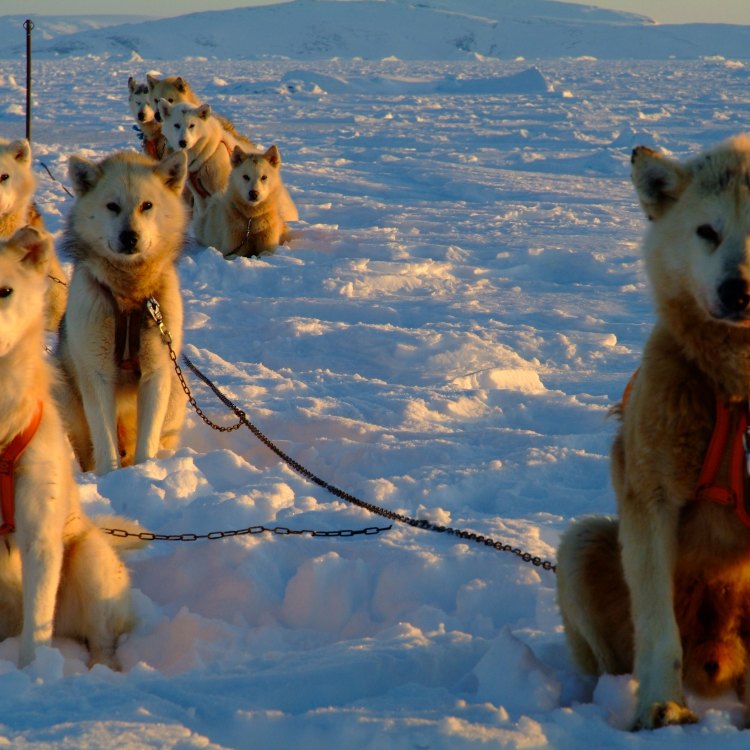
Greenland Dog
- Adult Size: Medium to Large
- Average Lifespan: 10-14 years
- Reproduction: Sexual
- Reproductive Behavior: Breeding season: February to April
- Sound or Call: Howling
- Migration Pattern: Not migratory
- Social Groups: Pack
- Behavior: Hardworking, strong, loyal, friendly
- Threats: Climate change, loss of traditional lifestyle
- Conservation Status: Not officially recognized
- Impact on Ecosystem: Important for transportation and hunting
- Human Use: Sledding, transportation, hunting
- Distinctive Features: Thick double coat, curled tail, erect ears
- Interesting Facts: Greenland Dogs have been used by humans for transportation and hunting in the Arctic for centuries.
- Predator: No significant natural predators
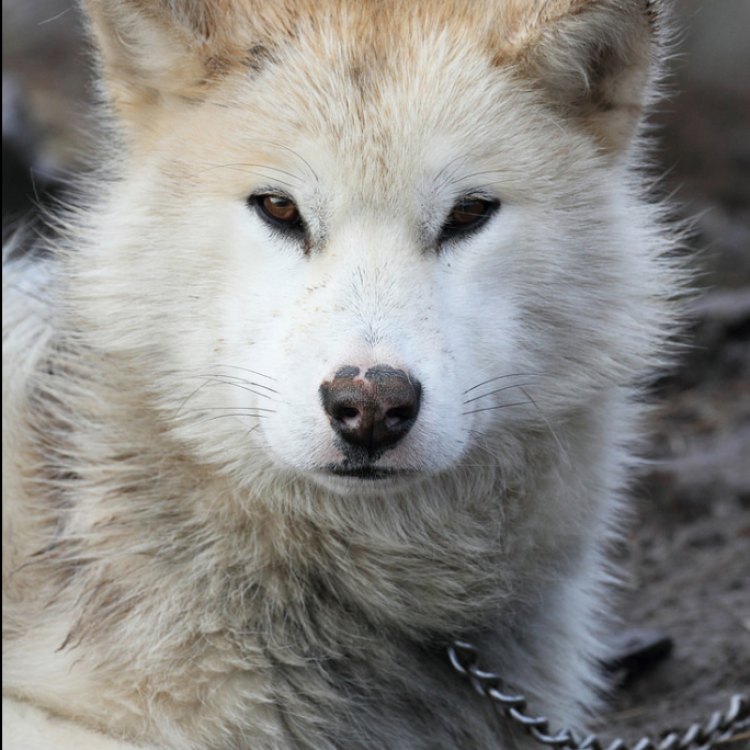
Canis lupus familiaris
The Mighty Greenland Dog: A Strong and Loyal Companion from the Arctic
Nestled in the frozen tundras of the Arctic, the Greenland Dog stands tall and proud. With its thick double coat, curled tail, and erect ears, it is a striking and powerful canine. But beyond its striking appearance, the Greenland Dog holds a significant role in the Arctic ecosystem and culture. In this article, we will explore the unique features and characteristics of this fascinating breed, along with its impact on the environment and its relationship with humans PeaceOfAnimals.Com.Size and Lifespan
The Greenland Dog is classified as a medium to large sized dog, with an average weight of 66-100 lbs and a height of 20-27 inches at the shoulder. Their adult size may vary, as some individuals can grow larger or smaller depending on their diet and living conditions. However, one thing is certain, these dogs are robust and sturdy, designed for the harsh conditions of the Arctic.
On average, Greenland Dogs have a lifespan of 10-14 years. However, with proper care and nutrition, they can live up to 16 years. This may seem relatively short compared to smaller dog breeds, but considering the harsh environment they live in, it is quite impressive.
Reproduction and Breeding Behavior
Greenland Dogs, like most canines, are sexual reproducers. Their breeding season starts from February to April, just before the hunting season begins. This timing is crucial for the survival of the breed, as it ensures that the puppies are born during the milder months when food is more plentiful Great Hammerhead Shark. Additionally, breeding during this time increases the chances of the puppies surviving their first year in the harsh Arctic conditions.
During the breeding season, male dogs will compete for the attention of the females. This often leads to howling and barking, as they try to establish dominance and attract potential mates. Once a pair has formed, they will retreat to a quiet place to mate, away from the rest of the pack.
Sound or Call: Howling
If you have ever heard the sound of a wolf or a husky howling, then you have an idea of what a Greenland Dog's call sounds like. Their haunting howls are a significant part of their communication and social behavior. The howling can serve as a means of alerting the pack of potential danger, communicating with distant members, and expressing emotions such as loneliness or excitement.
Migration Pattern and Social Groups
Unlike many other animals in the Arctic, Greenland Dogs are not migratory. Instead, they stay in the same general area, living in a pack structure. The pack is usually led by an alpha male and female, who are responsible for protecting and providing for the rest of the pack. The other members of the pack may include related and unrelated individuals, with the alpha pair having the most privileges and responsibilities.
Greenland Dogs are highly social and form strong bonds within their pack. Their social structure allows them to work together efficiently, whether it's for hunting or pulling sleds. This pack mentality is a crucial aspect of their survival in the harsh Arctic conditions.
Behavior: Hardworking, Strong, Loyal, Friendly
Greenland Dogs are known for their impressive work ethic. They are hardworking, strong, and loyal. Historically, they have been used by Arctic communities for transportation, hunting, and general tasks such as carrying heavy loads. These dogs are capable of pulling up to four times their body weight, making them an essential asset for survival in the Arctic.
Despite their fierce and hardworking nature, Greenland Dogs are also known for their friendly and social demeanor. They have a natural inclination to form strong bonds with humans, and their loyalty is unmatched. This trait has made them beloved companions for many centuries in the Arctic.
Threats to the Greenland Dog
As with many other Arctic species, the Greenland Dog faces a significant threat from climate change. As temperatures continue to rise and the Arctic ice melts, their natural habitat and food sources are being affected. This puts them at risk of starvation and disease, as well as disrupting their migration patterns and breeding behavior.
In addition to climate change, the loss of the traditional Arctic lifestyle also poses a significant threat to the Greenland Dog. With modernization and the introduction of new technologies, the need for using dogs for transportation and hunting has declined. This, in turn, has led to a decrease in the demand for Greenland Dogs, putting the breed at risk of extinction.
Conservation Status and Impact on the Ecosystem
Despite being an essential part of the cultural and ecological landscape of the Arctic, the Greenland Dog is not officially recognized as a breed by major kennel clubs, such as the AKC. This means that there are no specific conservation efforts in place to protect the breed.
However, the Greenland Dog plays a crucial role in the Arctic ecosystem. They are integral for transportation and hunting, which is not only important for the survival of Arctic communities but also helps maintain a balance in the ecosystem. With their strong and powerful bodies, they are able to traverse the harsh terrain and assist in hunting for food. They also play a role in controlling the population of other species, such as caribou.
Human Use: Sledding, Transportation, Hunting
The history of the Greenland Dog is closely intertwined with the lives of the Arctic people. For centuries, they have been used for sledding, transportation, and hunting, making them an essential part of daily life in the Arctic. These dogs are incredibly skilled at pulling sleds and navigating through the challenging terrain, making them an invaluable asset for survival.
Sledding is not just a means of transportation in the Arctic; it is a way of life. The Greenland Dogs play a crucial role in this activity, providing a connection between humans and the delicate Arctic environment. They are also used for hunting, and their keen senses and instincts make them adept at tracking and catching prey.
Interesting Facts
Greenland Dogs have been domesticated for over 4000 years, making them one of the oldest breeds of dogs on the planet. They have been a vital part of the Arctic way of life for centuries, and their role continues to this day.
In addition to their work ethic and physical abilities, Greenland Dogs are also known for their intelligence and problem-solving skills. They are capable of adapting to various situations and overcoming obstacles, making them highly versatile and valuable in the Arctic.
Predators: No Significant Natural Predators
Greenland Dogs have evolved to survive in one of the most challenging environments on Earth, and that includes being able to defend themselves against potential predators. With their size, strength, and sharp senses, these dogs have few natural predators in the Arctic. However, in certain situations, they may face threats from other predators, such as wolves or polar bears. In these cases, their fierce demeanor and intelligent use of strategies and the pack structure help them to protect themselves and their owners.
In conclusion, the Greenland Dog is a remarkable and unique breed, adapted to thrive in the harsh conditions of the Arctic. They have been an essential part of the ecosystem and the lives of Arctic communities for centuries. However, with the changing climate and loss of traditional lifestyle, this magnificent breed is facing threats to its survival. It is crucial that efforts are made to protect and preserve this remarkable breed, not only for its historical and cultural significance but also for its important role in maintaining the delicate balance of the Arctic ecosystem.
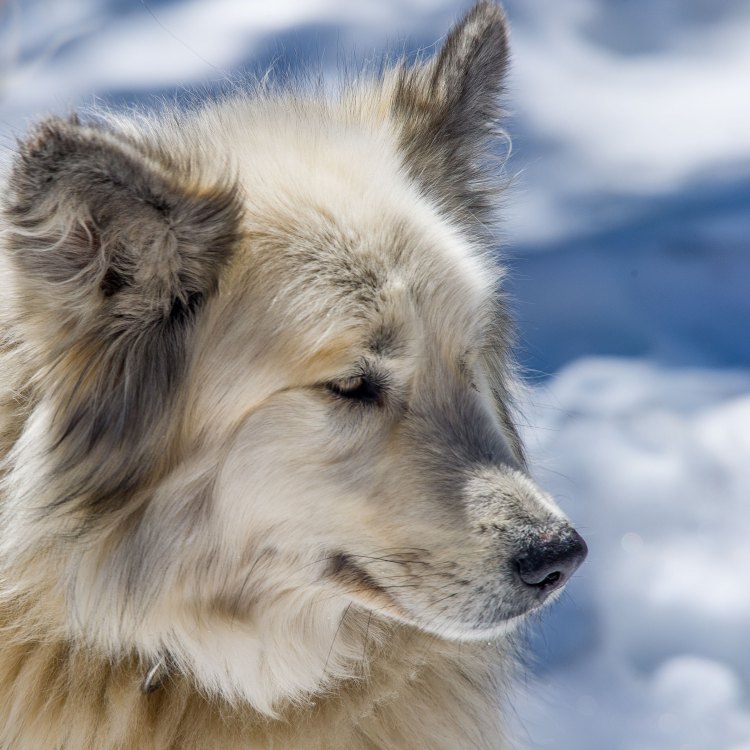
The Loyal and Resilient Greenland Dog: A Complete Guide For Potential Owners
Disclaimer: The content provided is for informational purposes only. We cannot guarantee the accuracy of the information on this page 100%. All information provided here may change without prior notice.

